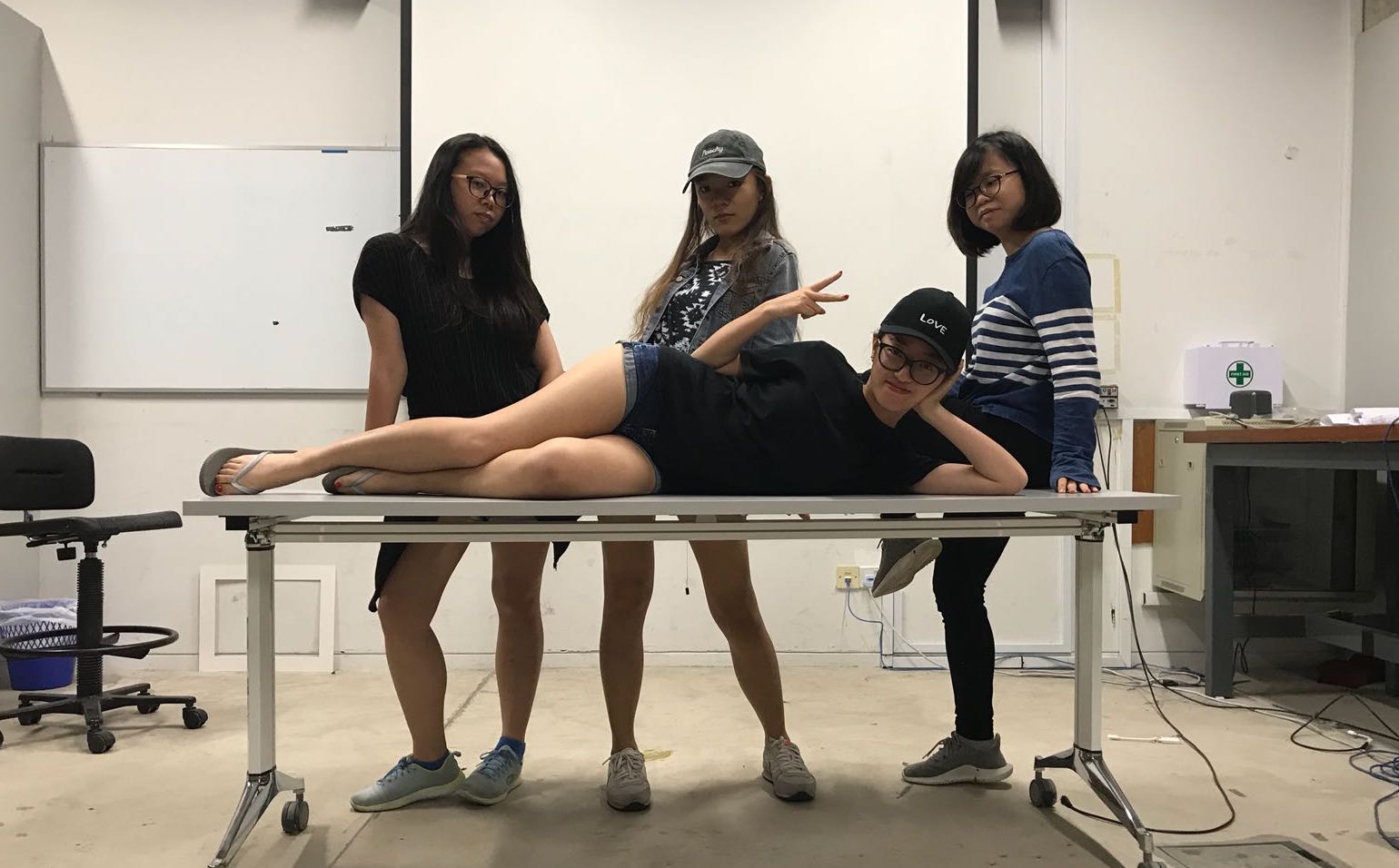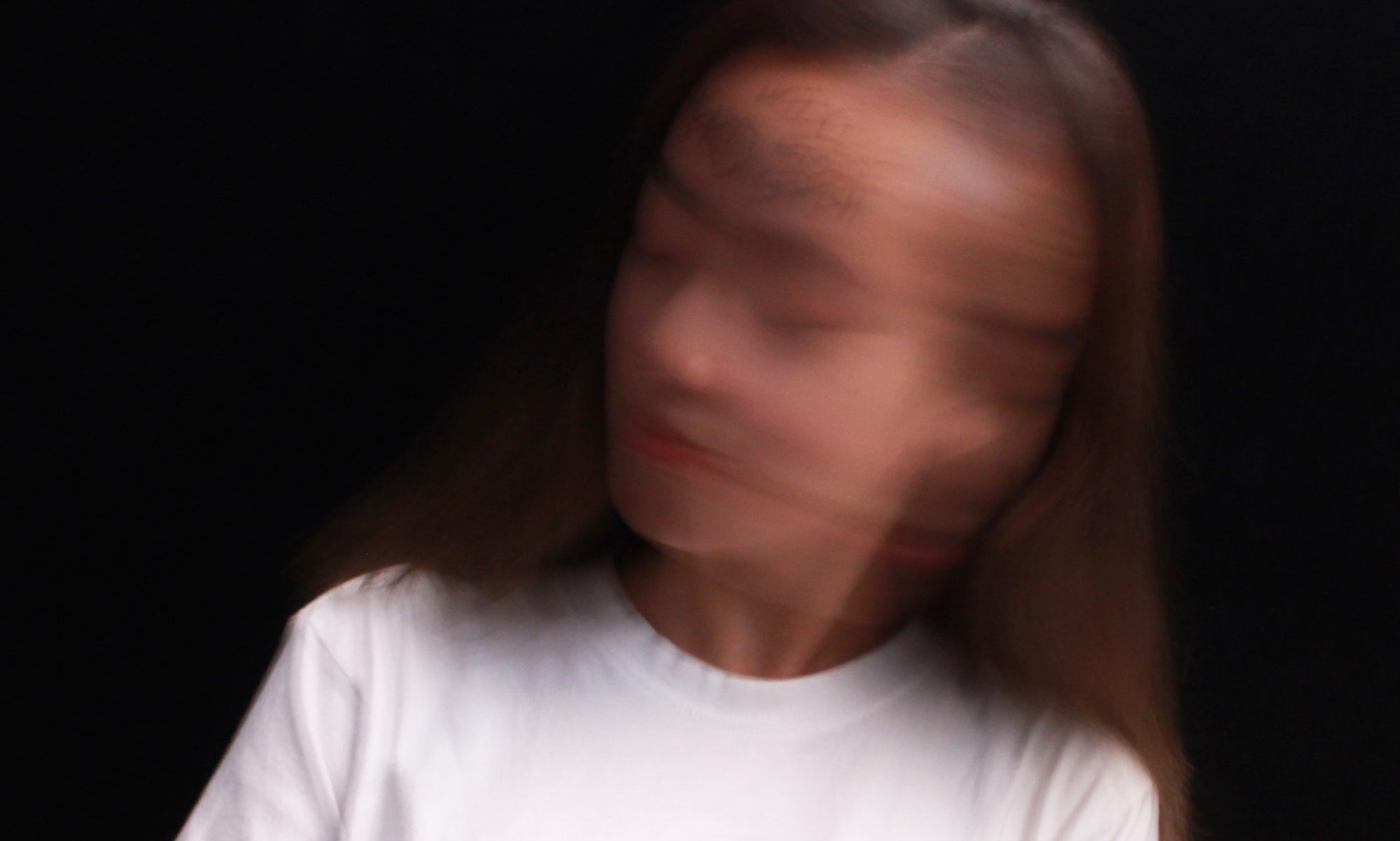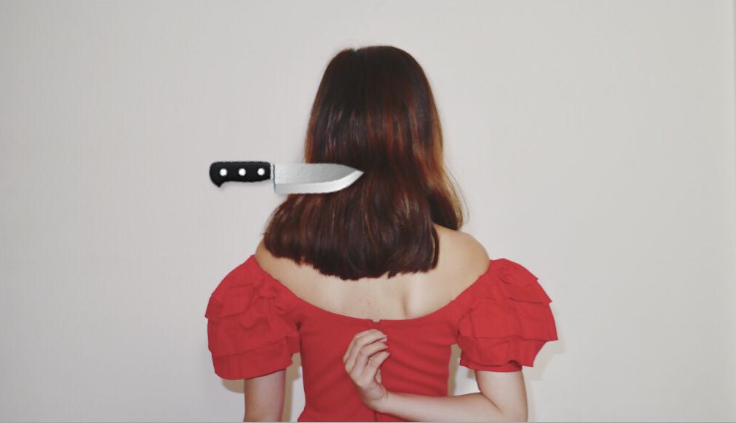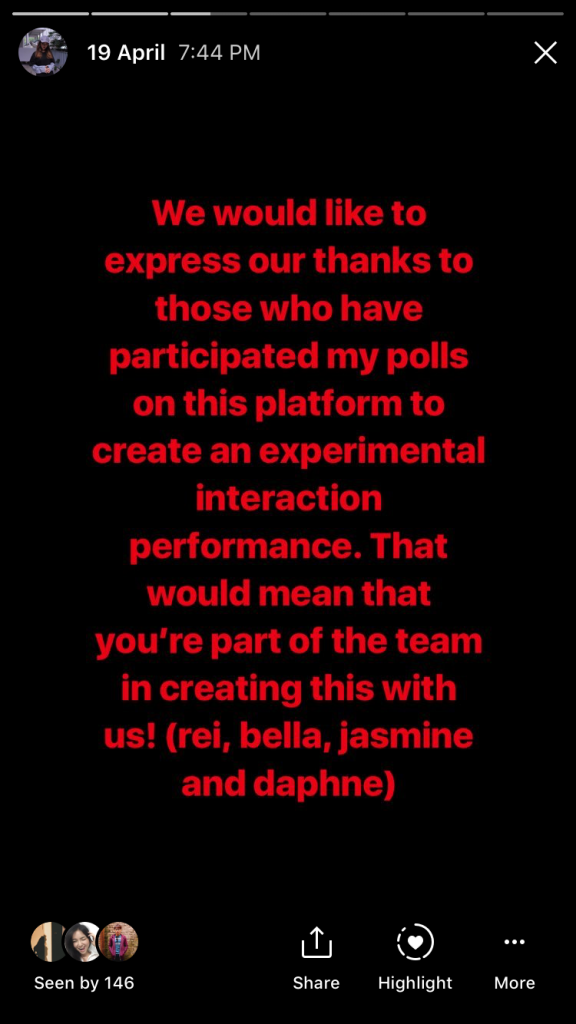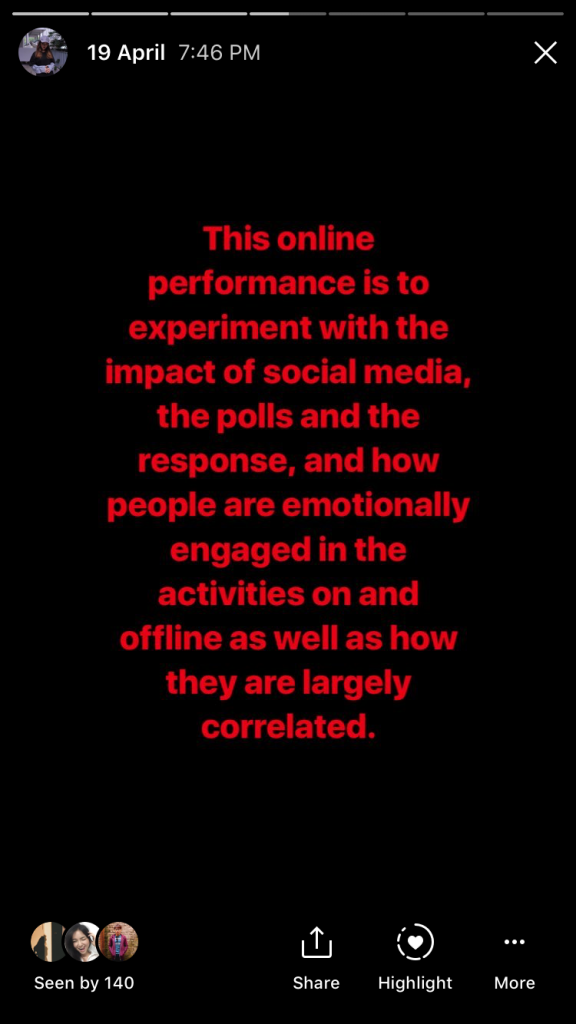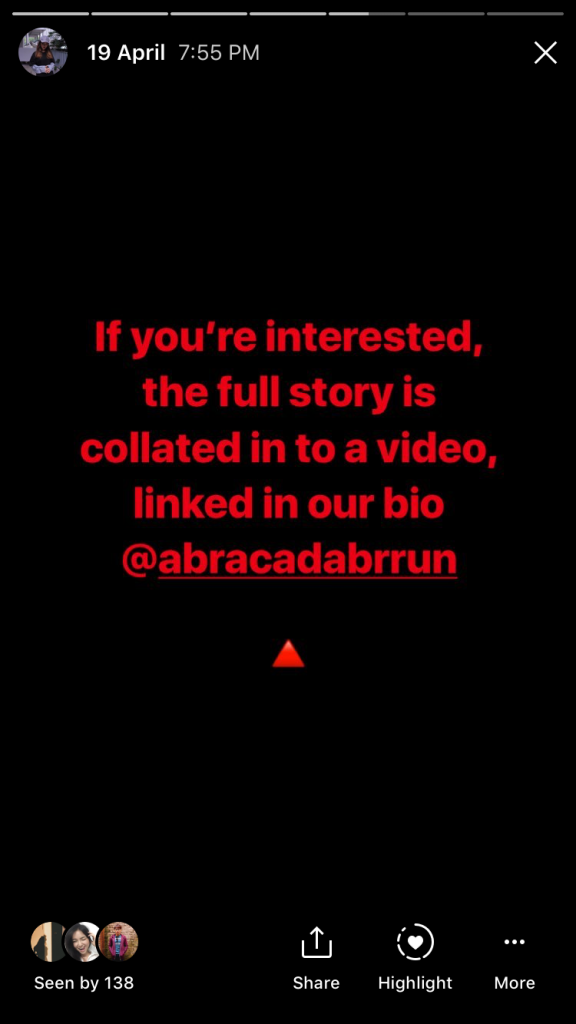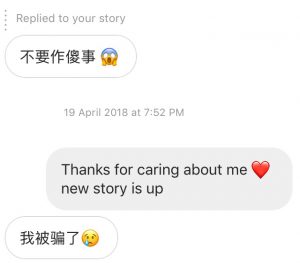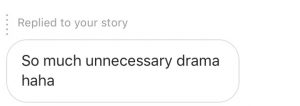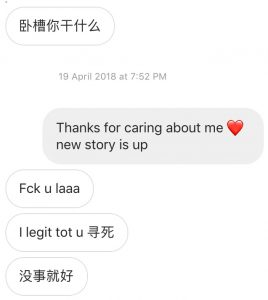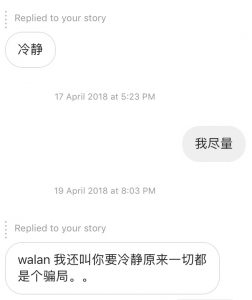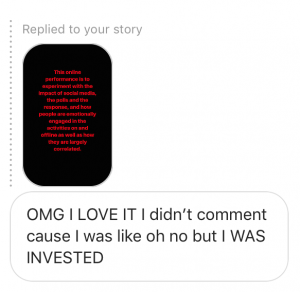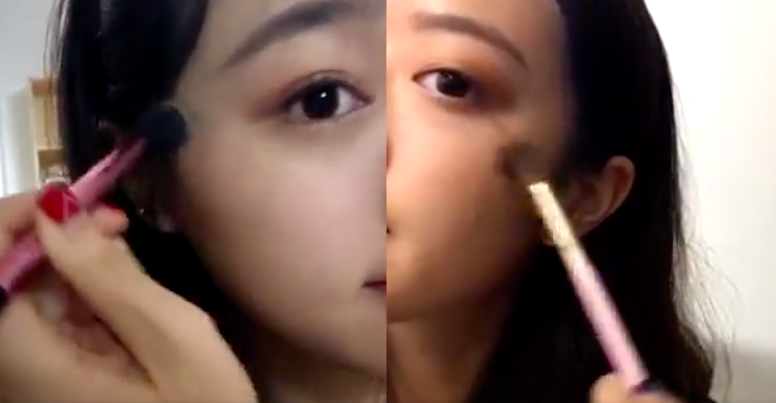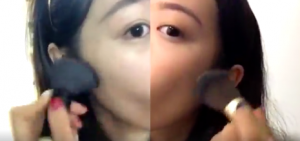Third Space Fallacy
A Third Space Fallacy is an experimental interaction performance on third and first space that combines the responses collated on the third space through Instagram polls and stories to curate the next move in a friendship conflict between two girls, Bella and Daphne. To make the entire performance as real as possible, both girls had to put up an act in the span of 1 week in the first space, when questions arise from the people around them. Also, to stage that this is not part of our project for Experimental Interaction, our group have created another Instagram account @abracadabrrun, collating uninformed decisions made by our followers, which is part of the narrative of the death of Bella.
Conceptualization
Initially, I had an idea of having a social media game at Changi Airport, however, we rethink after receiving the comment of my critique on the online Symposium, Are We in LOVE with the Connectedness? from our professor Randall Packer.
“Very interesting how you expressed your thoughts on interaction in such personal terms: how we engage emotionally in the third space. This has been one of the key ideas we have discussed this semester, how meaningful interaction can be achieved despite geographical separation. Wasn’t this proved when you elected not to interact in the chat for Annie Abrahams’ performance, and found yourself removed and disconnected. This implies that is direct interaction that creates the quality of engagement in any form of interactive art. Perhaps it would be interesting and helpful to your thesis to applied this to Blast Theory’s work: how the players and performers engage in something dynamic, arresting, and challenging in both physical and virtual spaces. ”
– Comment on Are We in LOVE with the Connectedness? Randall Packer
Randall Packer mentioned that the emotional engagement in the third space has been one of the key ideas we learned in this semester. It got my group mates and me into thinking. How can we emotionally engage our audience? The answer is DRAMA. Some people love drama because it is something that might not really happen in real life or the exaggerated version of the real-life event. It catches people’s eyes, trigger their emotions, and sometimes it is just entertainment.
We chose Instagram as the main media for our piece. We decided to use our personal account in order to make the drama seems real, and let people participate unconsciously. Thus, we could receive real emotions from our audience, or while interacting with them.
Firstly, we scripted the characters and the rough/possible storyline. The two characters, Bella (acted by Bella) and Daphne (acted by Daphne) are the bullied and bully in this friendship drama. They are old friends from Secondary School. Daphne had been taking advantage of the kindness and dependability of Bella since they met. Then, they happened to be on the same course and university. The conflict started with Bella exposing her toxic friendship on her Insta-story. The rough storyline is that Bella expressed her anger towards the friendship, and asking for solutions online, while Daphne got annoyed by clingy Bella and also started ranting and asking for help on her social media. The ending of the drama could be happy, sad, tragic, and etc. depended on the choices our audience made.
Execution
We only had two weeks for this group project, and we started building up the tension on Instagram a week before the critique day.
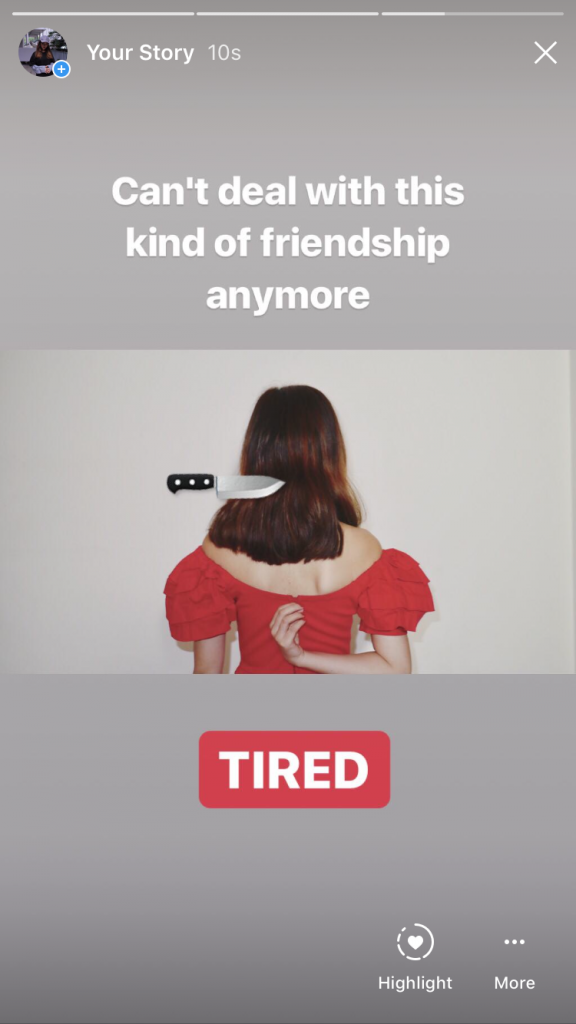
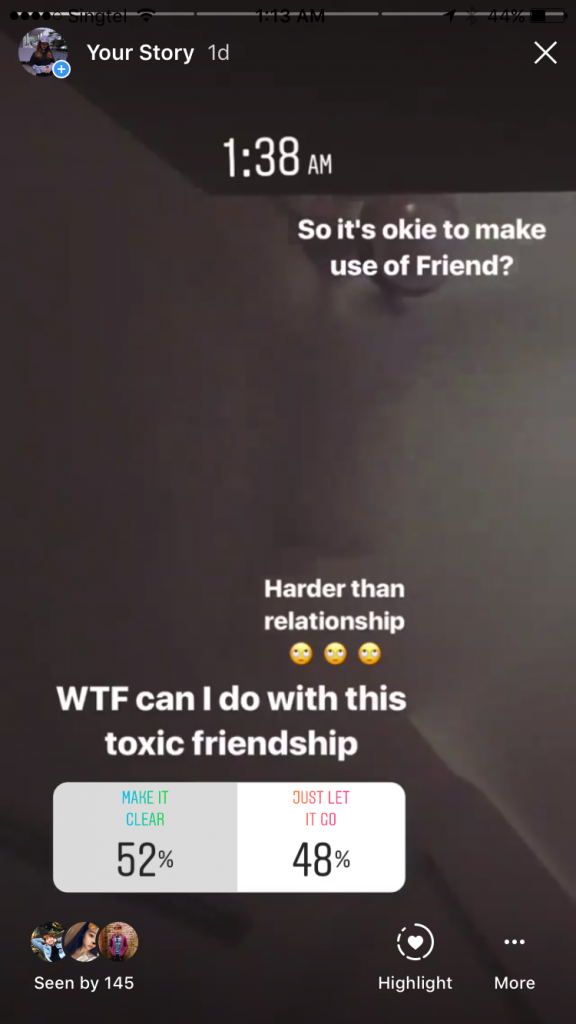
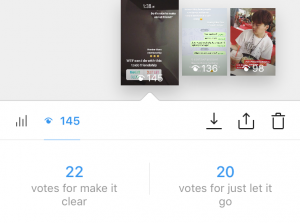
I posted the first story to complain about the toxic friendship and 45 out of 145 viewers voted for this post. The opinions are make it clear and just let it go. Participant Including strangers as my account is public.
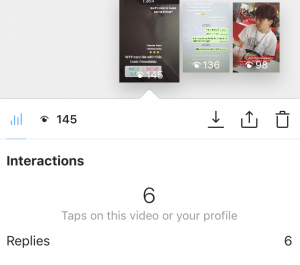
Also, people were replying to this post. 4 people were showing concern, 1 was curious and 1 was giving the constructive solution to my situation. Then we decided our next move base on the result we obtain.
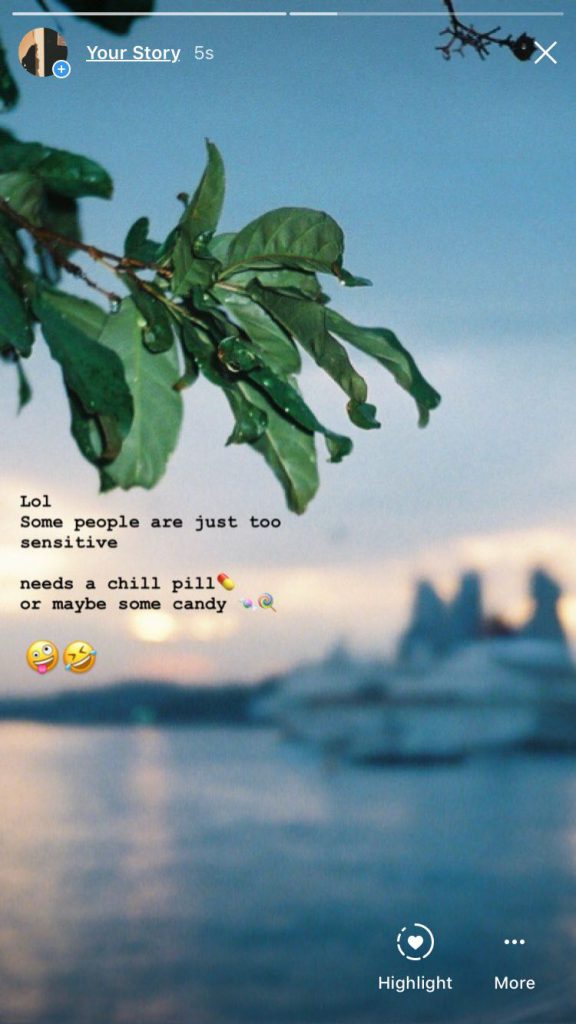
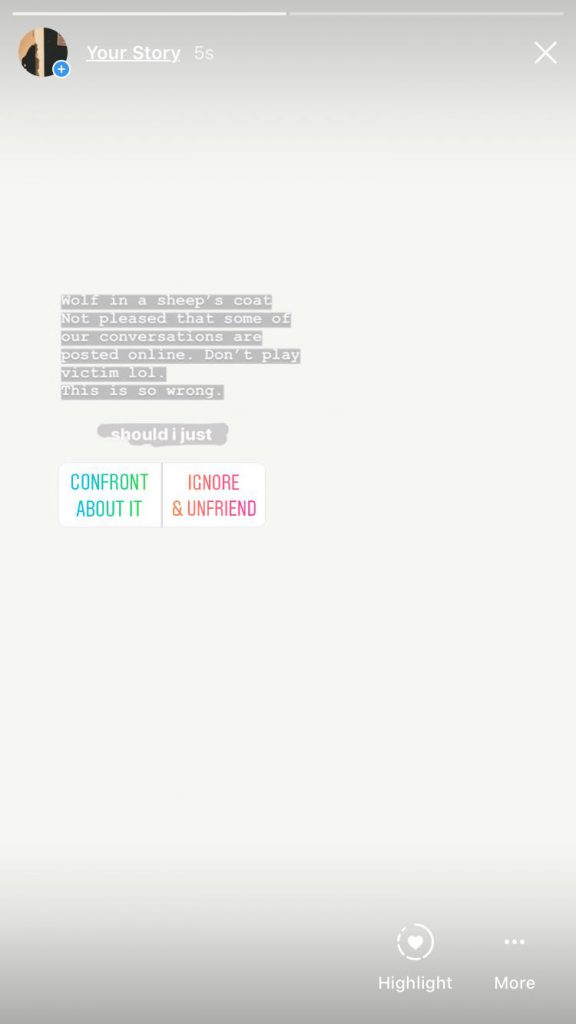
Daphne also posted emotional stories and ask her followers to vote for her.
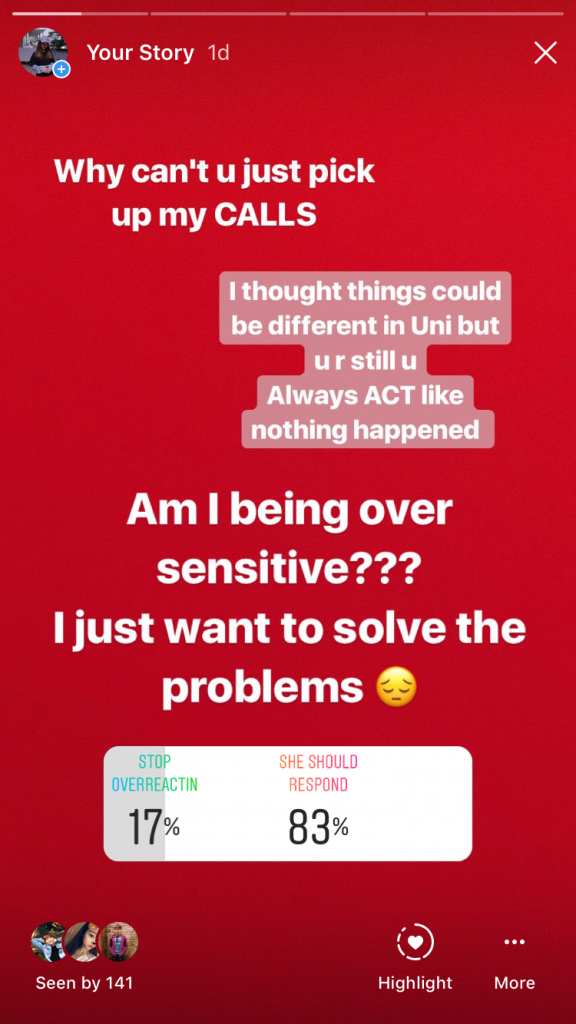

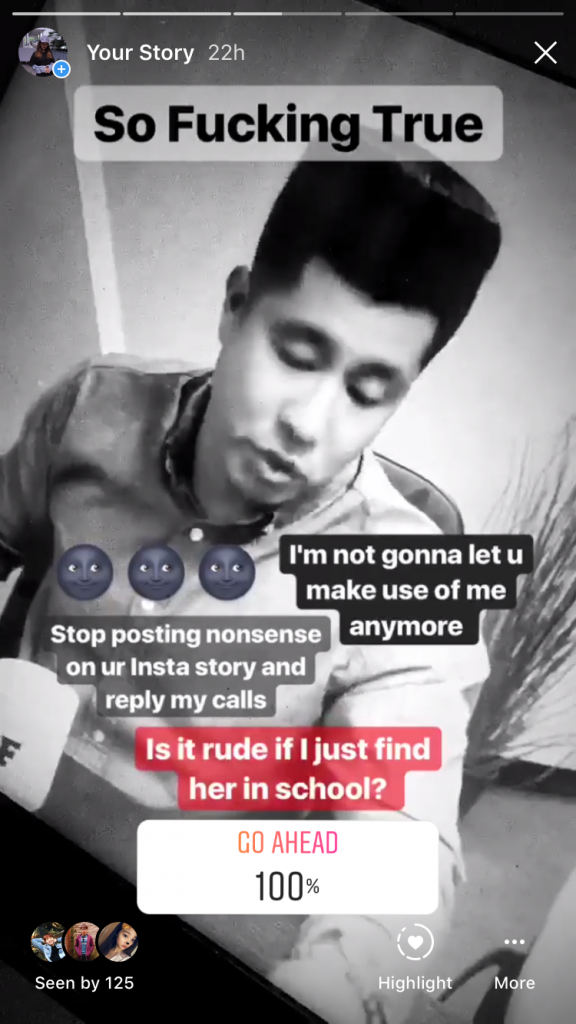
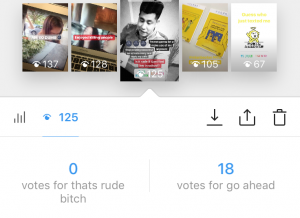
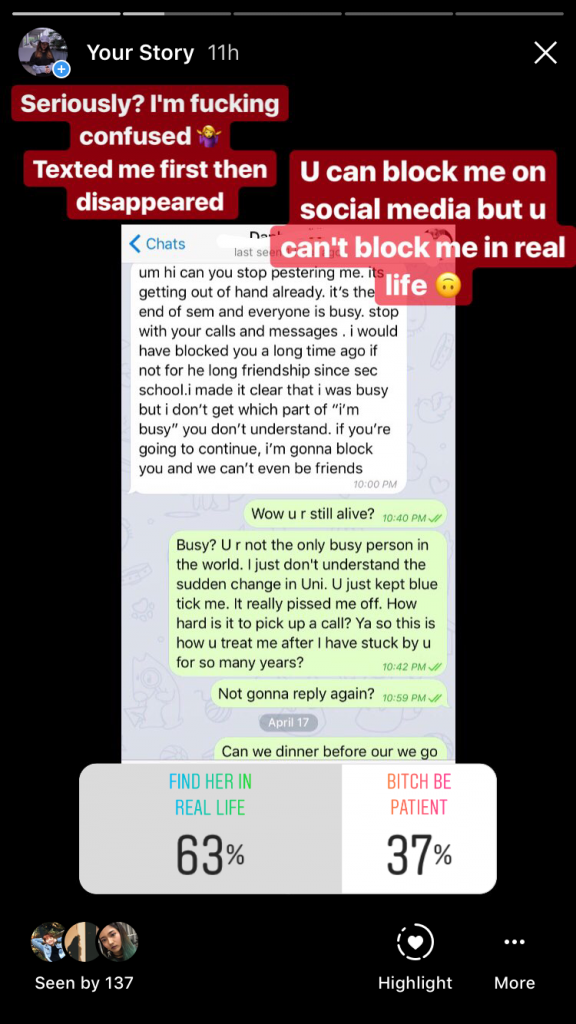
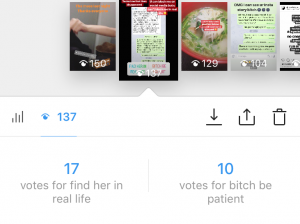
The social media rant lasted for days until my followers voted me to find her in real life. I found Daphne at Jurong Point by stalking her Insta-stories. We got into a fight there as her followers voted her to confront me. She left me there with hurtful words as she was angry that I kept following her and contacting her.
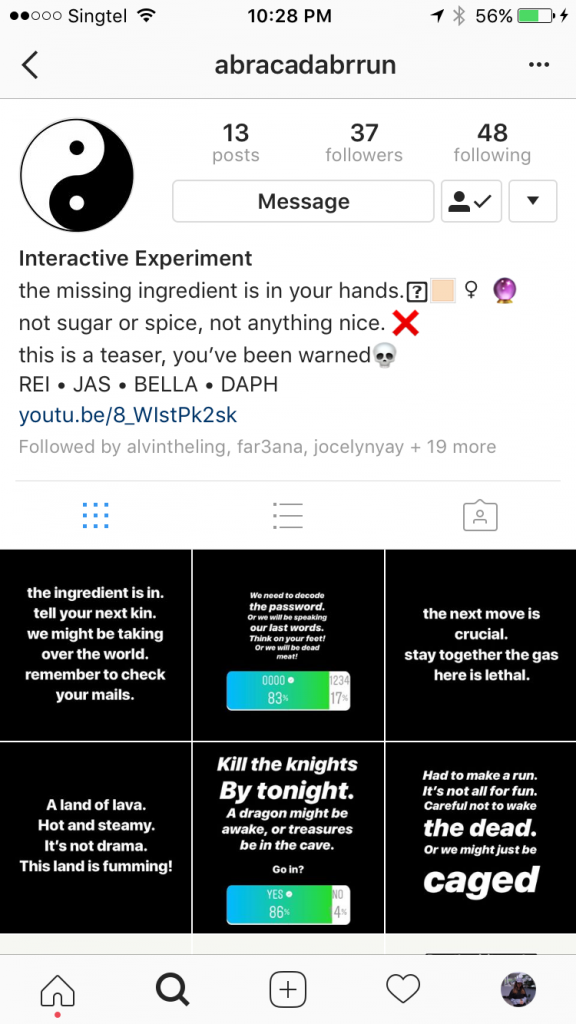
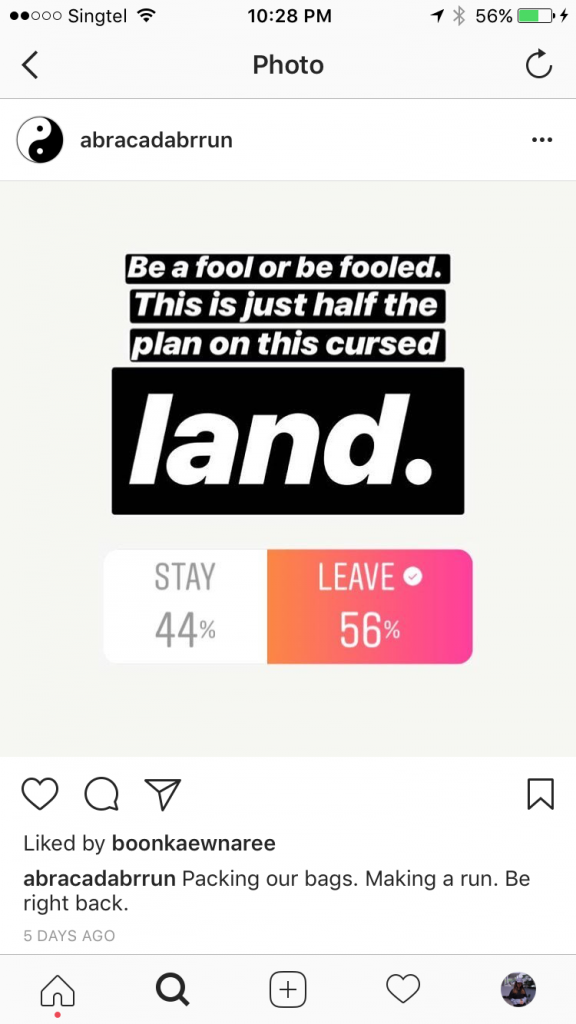
In order to make it more convincing as people were doubting that our drama is our Experimental Project, we made an Instagram account and used our initial idea to create a fake game. Also, the blind decision people had made actually led to my suicide and the way I suicide.
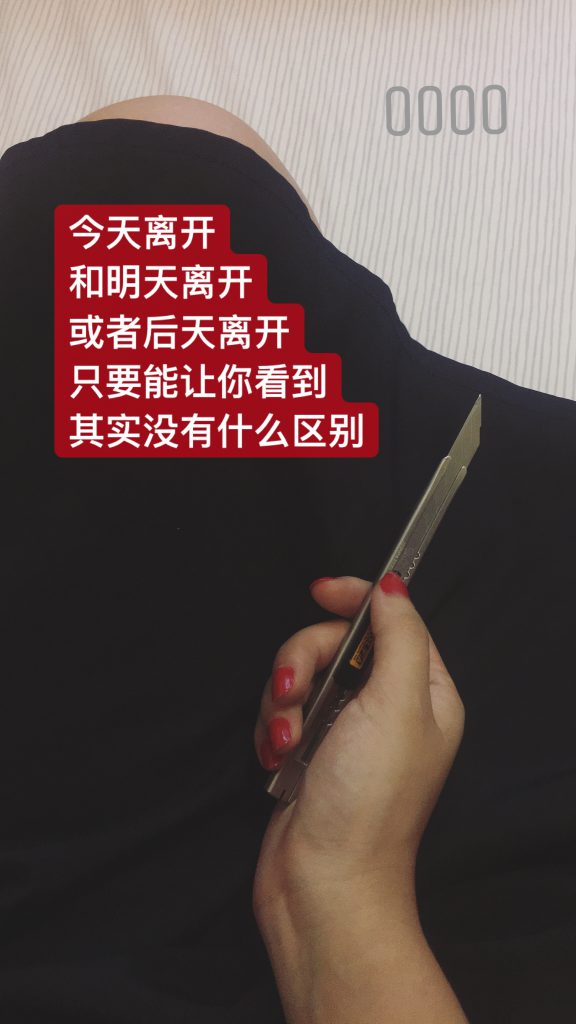
Our social media drama reached the climax with my last emotional posts. I left social media for 18 hours, as I committed suicide in the third space. I received 5 replies that showed concerns and other messages from friends.
The game ended with the launch of our trailer video on youtube and our message.
We received emotional replies from our friends after they found out the truth. One friend actually told me that she did not participate in the voting but she actually followed the whole story.
Discovery & Exploration
This piece of social media performance is experimental, as it is only 30% staged. The audience has the most control over the narrative. Our intention is to test the impact of social media, how it affects our life emotionally and create the awareness that our behaviors on social media could lead to serious consequences. We were surprised that how powerful Insta-story is. The image and text we created were able to convince people around us even our closed friends who see us almost every day. It is interesting how easy we could shape our digital identity that is totally different from our real personality. Also, people actually brought the third space drama into the first space to engage more people. They talked about the story and also tried to have their opinion towards our situation. Daphne and I needed to be in our characters in real life.
To conclude this project, we applied what we learned in this semester into this social media performance. We exposed our emotions online and created our new digital identities. We engaged our audience unconsciously in both first and third space. Everyone DIWOed this piece of performance, as we, the artists only created the outline and platform. Lastly, I think the role of artists is to make the world a better regardless of our area of disciplines. Furtherfield helped refugee through the power of Internet, raised the awareness of the environmental issue, Media Burnt was conveying the issue of mass media, and Hasan Elahi spread his story of discrimination online. As young artists, we also like to raise the question of how we should use social media, and how we can avoid social media tragedy to happen in the future through this project.
